Last Updated on December 26, 2022 by asoulwindow
Table of Contents
Nandhaur Wildlife Sanctuary
Nandhaur Wildlife Sanctuary turned out to be unlike any other wildlife destinations I have visited, whether in India or abroad. With a targeted goal of long-term conservation of tigers in this part of Uttarakhand, Nandhaur Wildlife Sanctuary aspires to be a safe haven for wildlife. During my visit, I felt that since Nandhaur Wildlife Sanctuary doesn’t receive as much footfall as say Jim Corbett National Park or Kaziranga National Park, the animals and birds have more privacy here than at other places.
What makes Nandhaur Wildlife Sanctuary such an exciting wildlife destination for me is the fact that it is a contiguous forest which shares boundaries borders with not only the border of Himachal Pradesh and Haryana, both Indian states but also with the next-door neighbor Nepal. Did you know that Nandhaur Wildlife Sanctuary is also the youngest sanctuaries in India?
Thanks to its unique geography, Nandhaur Wildlife Sanctuary is considered an important trans-boundary conservation landscape in the Indian sub-continent. Established with an objective to save the biodiversity of the Terai Arc Landscape (TAL) and conserve tiger population, Nandhaur Wildlife Sanctuary has largely been a success story.
The raw paths, untouched land, virgin landscapes and untamed jungles have ensured that it remains a safe haven to not just tigers but other wild animals, reptiles, amphibians, insects, birds etc. There are also so many unusual things to do here.
Here is all you wanted to know about Nandhaur Wildlife Sanctuary near Tanakpur and Haldwani in Uttarakhand. Such detailed information is not available in not found in traditional guide books and mainstream media. Through this information packed travelogue, I want to educate my readers with deep insight in this comprehensive travel guide.
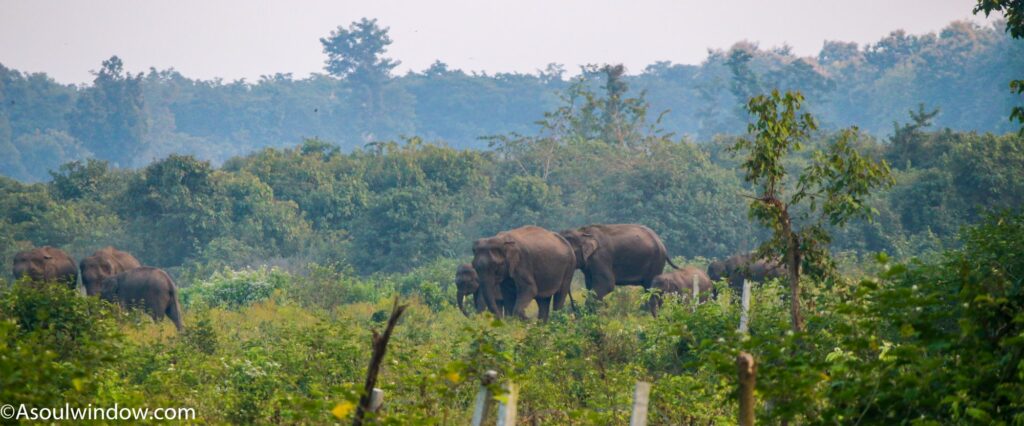
My Experience of Nandhaur Wildlife Sanctuary
Nandhaur Wildlife Sanctuary is one of the most unexplored wildlife sanctuaries of India. I had not even heard of its name until I visited Tanakpur. We did a jeep safari on a dusty and rickety jeep, which indicated that it is not the typical wildlife safari. It also set the tone for what was coming next.
It was for the first time that I was able to do a jeep safari in the core zone of a wildlife sanctuary. We did a lot of off-roading and drove on paths which were not the designated path for a wildlife safari. This is also why, the branches of trees and tall grasses would often slap my face, no matter how much I tried to shield it.
The thrill of spotting exotic birds and wild animals in their natural habitat, and the feeling of being one with nature has few parallels in the world. With shrinking forest cover, it is becoming more of a luxury than a common sight these days. I feel fortunate that being an avid traveler, I get several opportunities to visit such heavens.
Wildlife Spotting
Early morning is the best time to visit if you want to spot wild animals and rare birds in Nandhaur Sanctuary. This is when animals and birds come out to feed.
We didn’t see much animals and birds except for Asian elephants, fleeting glimpses of barking deer, Rhesus monkeys and peacocks etc. But the stunning landscape of Nandhaur Wildlife Sanctuary made up for the frugal sightings we had. I visited Nandhaur Wildlife Sanctuary with my renowned blogger friends Mrs. Lakshmi Sharath and Ms. Ambica Gulati.
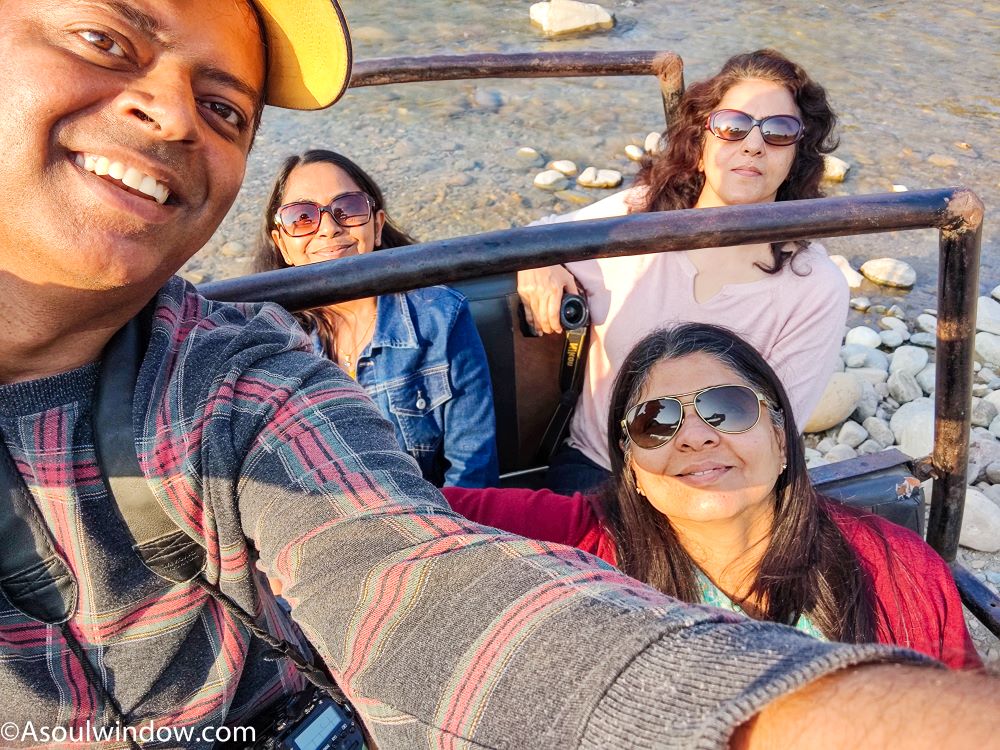
Just as it was turning dark and we were leaving the sanctuary premises, our guide excitedly showed us a large herd of Wild Asian elephants. They were located far away from us. Despite the distance, the elephants were able to sense our presence. The matriarch of the family looked at us menacingly while her family members did their business, mud-bathing being the most important one.
We saw fleeting glimpses of the huge barking deer during both our entry and exit from the Nandhaur Sanctuary.
Spotting tigers
We stopped at a river for sometimes, where I met a lone old man who was hired to do some labor work. It was a watering hole which meant that wild animals, both docile and ferocious visit this place regularly.
I struck a conversation with him. I asked him if he saw any tigers here ever since he was employed in this region. He claimed to see tigers many times. In fact, he said that a tiger just passed through the other side of the river. Moments later, a truck driver passed us, claiming that he saw the tiger too just few minutes ago.
We tried hard but we could not see any tigers. There was no trace of tiger footprints and alarm calls of langurs and chital deer either. But then, this is quite normal in even the most famous national parks of India. Every day in jungle is a new day. You never know that you may even see a tiger family at the same place where I saw none.
Soul Window Thoughts
I have been to several wildlife destinations in India such as Pench National Park, Jim Corbett National Park, Dudhwa National Park, Manas National Park, Kaziranga National Park, Satpura National Park and even the remote Hollongapar Gibbon wildlife sanctuary, but nothing came close to the raw and untamed nature I saw in Nandhaur Wildlife Sanctuary of Tanakpur.
Nomenclature of Nandhaur Wildlife Sanctuary
Nandhaur Wildlife Sanctuary is named after the Nandhaur River. Nandhaur Wildlife Sanctuary is also abbreviated as NWS or Nandhaur WLS.
Area of Nandhaur Wildlife Sanctuary
Nandhaur Wildlife Sanctuary is spread across an area of 270 square kilometers which is roughly 104.23 square kilometers.
Zones of Nandhaur Wildlife Sanctuary
The 5 ranges of the Haldwani Forest Division are Sharda, Nandhaur, Jaulasal, Chakata and Danda. Danda Village of the Nandhaur landscape has gorgeous views of mountains and forests, filled with ethereal beauty you may not witness elsewhere. It is a lesser-known sightseeing attraction here.
We entered Nandhaur Wildlife Sanctuary through Kakrali gate. Some of the several routes which tourists can take here fall on the way to the Suryabeni Temple, Jaulasal and Machchli Van.
You can also access Nandhaur Wildlife Sanctuary through another gate known as Chor Galiya. You can both enter as well as exit from the Chor Galiya gate.Chor Galiya is located around 32 kilometers away from the nearest big city Haldwani. You can also enter the sanctuary through the Kadapani gate.

Where is Nandhaur Wildlife Sanctuary located?
In which district does the Nandhaur Dun lie? Located in the Nainital District, which is a part of Terai Arc Landscape, bound by River Gola in the west and River Sarda in the east, Nandhaur Wildlife Sanctuary is visually stunning!
Nandhaur Wildlife Sanctuary is located along the Himalayan foothills in Tanakpur, in the eastern corner of Uttarakhand near the border of India and Nepal. In fact, the border is a major attraction here.
You will be surprised to learn that this tract is contiguous with the lesser-known Suklaphanta National Park in Nepal towards the east direction and the Pilibhit Tiger Reserve of my home-state Uttar Pradesh in south direction.
Did you know that Nandhaur Wildlife Sanctuary is sandwiched between the famous Sharda River and Gola River in the Haldwani forest division? Nandhaur Sanctuary also encompasses a significant part of Champawat Forest Division as well as the Haldwani Forest Division.
Terai Arc Landscape or TAL
Nandhaur Wildlife Sanctuary also continues till the Terai central forest division and the dense green forests of Ramnagar. This is a lesser-known fact.
Since no one shares such lesser-known facts, so I thought I should mention this here. The total area of Terai Arc Landscape or TAL is an astonishing 49,500 square kilometers. India being the 7th largest nation of the world, is home to 30,000 square kilometers of Terai Arc Landscape. The remaining area of TAL lies in the Himalayan Kingdom of Nepal.
When was Nandhaur Wildlife Sanctuary established?
It is a very newly protected forest. It was not until 14th December, 2012 that Nandhaur Wildlife Sanctuary was notified with a clear objective to ensure sustained flow of ecosystem as well as long term conservation of biological and geo-hydrological values. The same was declared by the Uttarakhand Forest department and MoEF or the ministry of environment and forest at a meeting with the center in the year 2012.
The gates of the offbeat Nandhaur Wildlife Sanctuary were opened for visitors only in November 2015. Nandhaur Wildlife Sanctuary was announced to be a part of the Shivalik Elephant Reserve as recently as the year 2002.
It was not until the year 2004, that Nandhaur Wildlife Sanctuary was identified by Wildlife Institute of India as one of the 3 main suitable locations which would provide perfect habitat for the conservation of Royal Bengal Tigers for a long time. Ever since, tigers have lived and thrived in the forests that surround Tanakpur in West Uttarakhand.
Why is Nandhaur Wildlife Sanctuary famous?
Thanks to its raw appeal, Nandhaur Wildlife Sanctuary is known in wildlife circles as an offbeat destination to see wildlife in India. Not many are aware that Nandhaur Wildlife Sanctuaryis one of the newest tiger reserves of Uttarakhand and India. The fact that it was only recently included in the protected areas of India means that it is still a relatively undiscovered haven for wildlife enthusiasts like me.
Since it harbors rich wildlife such as Asian Elephants and Royal Bengal Tiger, it attracts zoologists and wildlife enthusiasts alike. The flora and fauna of the outer-Himalayan ranges and Bhabhar area thrive in the Nandhaur Wildlife Sanctuary.
What makes Nandhaur Sanctuary desirable for a real naturalist and wildlife lover is the fact that you will hardly see any other tourists here. This place is a far cry from the planned ‘tiger shows’ which many Indian wildlife destinations are habitual of showing.
However, that is also the most exciting part of doing a jungle safari here. The luxury of exploring the untouched wilderness of the forest with only birdsong and animal calls giving you constant company is rare!
Nandhaur Wildlife Sanctuary: Offbeat Place to see in Uttarakhand
Nandhaur Wildlife Sanctuary is one of the unusual places to see in Uttarakhand. Being off the touristy trail, not many know about this place. Located away from the crowds of more popular national parks of India, this unexplored jungle is not to be missed.
If you enjoy going off the beaten track, then this sanctuary will surely delight you. Since very few tourists visit even Tanakpur and Champawat, these places qualify to be one of the best offbeat places in all of Uttarakhand.
Unheard-of places such as these always excite me more than the regular touristy destinations. If you also love hidden gems such as Nandhaur Sanctuary, then you must visit it.
Mammals found in Nandhaur Wildlife Sanctuary
Which animals are found in Nandhaur Wildlife Sanctuary? It is a frequently asked question. Apart from the Indian tigers, many other animals, birds, amphibians and reptiles benefit from the conservation of terai arc landscape. Thanks to the remote, undisturbed location of Nandhaur Wildlife Sanctuary, it serves as an apt place for conserving local flora and fauna.
Khanila Tree is also found here. And so are the giant Mahavriksha known as Semal tree. I have seen similar huge Semal trees in Corbett national Park. One of them was also the place where Jim Corbett himself killed a man-eater tiger.

There are as many as 25 species of mammals, 20 species of fish and 15 species of reptiles which are found in Nandhaur Wildlife Sanctuary.
Some mammals found in Nandhaur Wildlife Sanctuary are:
- Flying fox
- Jungle cat
- Small Civet cat
- Sambar (Rusa unicolor)
- Spotted deer (Axis axis)
- Barking deer (Muntiacus muntjak)
- Grey Goral (Naemorhedus goral)
- Sloth bear (Melursus ursinus)
- Striped Hyena (Hyaena hyaena)
- Asian Elephant (Elephas maximus)
- Asiatic Black Bear (Ursus thibetanus)
- Common Leopard (Panthera pardus)
- Indian Pangolin (Manis crassicaudata)
- Royal Bengal tiger (Panthera tigris tigris)
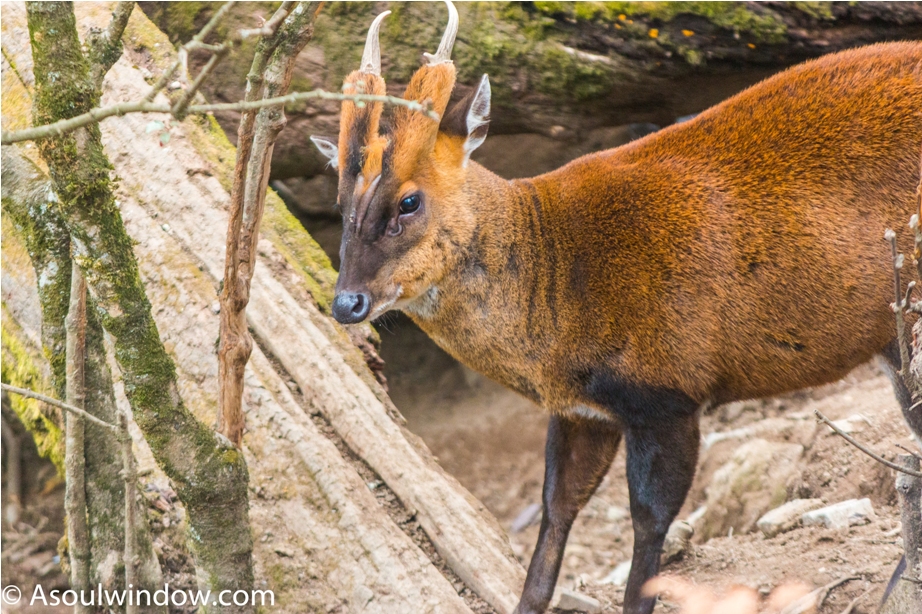
Soul Window Quotes
“Keep close to Nature’s heart and break clear away, once in a while, and climb a mountain or spend a week in the woods. Wash your spirit clean.”
– John Muir
Birds Found in Nandhaur Wildlife Sanctuary
Nandhaur Wildlife Sanctuary is also teeming with several avian species. Did you know that a whooping 250 species of birds call Nandhaur Wildlife Sanctuary as home? This is why it is also a birdwatcher’s paradise. Some rare birds like great pied hornbills are also found here. You need to be very lucky to be able to spot them though.

Being rich in diversity of avifauna, some important birds found in Nandhaur Wildlife Sanctuary are:
- Storks
- Pintails
- Herons
- Darters
- Mallards
- Partridge
- Rosy pelicans
- Brahminy Ducks
- Red Jungle Fowl
- Grey Jungle Fowl
- Cheer Pheasant (rare)
- Great Indian horned owl
- Black stork (Ciconia nigra)
- Great Hornbill (Buceros bicornis)
- Brown fish owl (Ketupa zeylonensis)
- Cinereous vulture (Aegypius monachus)
- Spot bellied eagle owl (Bubo nipalensis)
- Collared falconet (Microhierax caerulescens)
- Himalayan Griffon Vulture (Gyps himalayensis)
- Red headed trogon (Harpactes erythrocephalus)
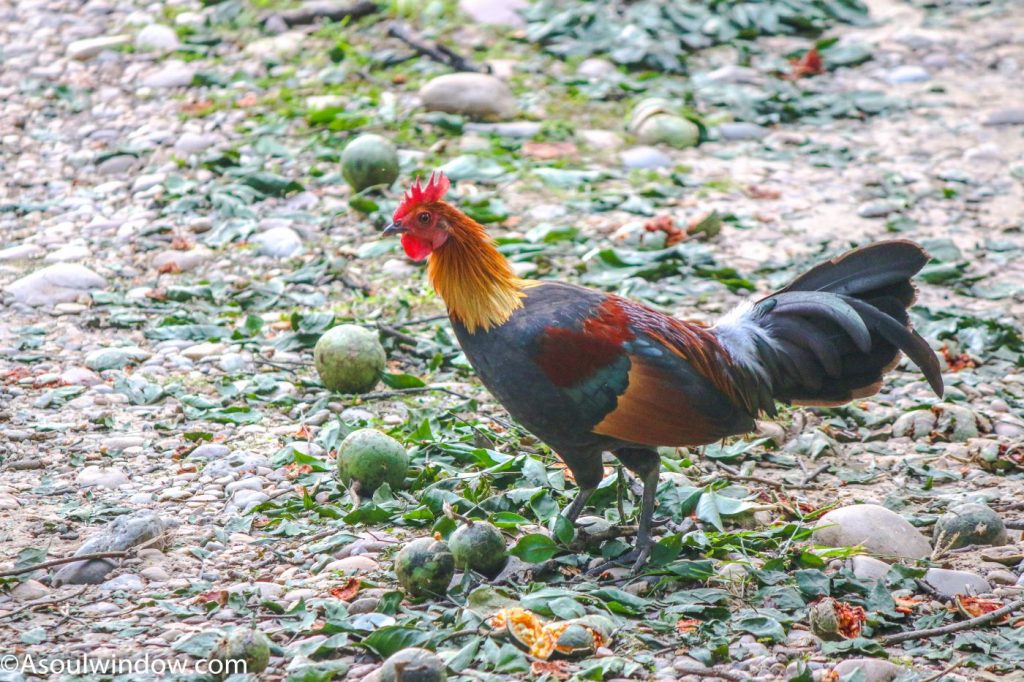
Vegetation and flora of Nandhaur Wildlife Sanctuary
While we were still doing the safari, our local safari guide educated us that Nandhaur Wildlife Sanctuary primarily is a sal forest. Driving through the thick forests of sal trees was an experience in itself. The paths which took us through the thickly wooded forests were scenic to say the least.
I was impressed to learn that more than 100 different species of trees grow here naturally. I noticed during safari that even more trees are being planted here by the forest department because it plays an important role in the vibrant ecosystem of jungle.
Some of the major tree varieties found inNandhaur Wildlife Sanctuary are chir pine, bamboo, sal, shisham and teak. Apart from the trees, 35 species of climbers and grasses along-with 30 species of shrubs are also found here. I observed that Nandhaur Wildlife Sanctuary have forests so dense that at certain places, even the sunlight finds it hard to reach.
The main vegetation found in the offbeat Nandhaur Wildlife Sanctuary includes the following:
- Riverine forests
- Sub-tropical pine forests
- Tropical grasslands
- Tropical moist deciduous forests
- Secondary scrub
- Tropical Grasslands
- Miscellaneous forests
There are several species of high conservation significance which are found in this remote wildlife sanctuary of Uttarakhand. The major floral species of Nandhaur Wildlife Sanctuary which merit conservation include:
- Pittosporum floribundum
- Indopiptadenia oudhensis
- Dysoxylum binectarieferum
- Various species of non-timber forest products (NTFPs)
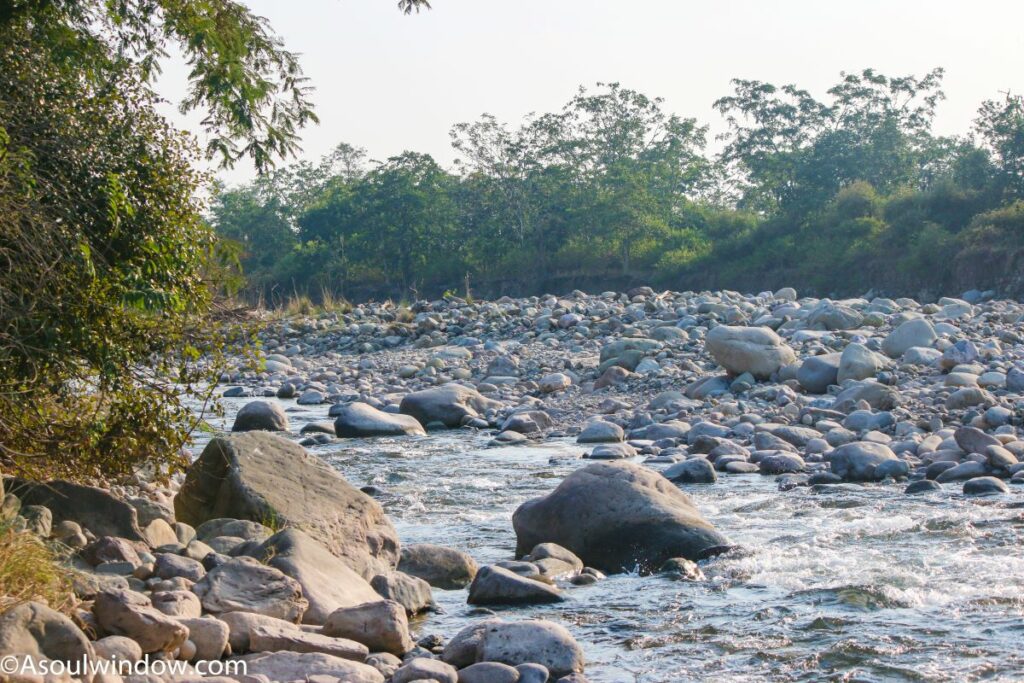
Landscape of Nandhaur Wildlife Sanctuary
Which river flows through Nandhaur Wildlife Sanctuary? It is a commonly asked question. The perennial Nandhaur River flows across the sanctuary. Ladhya River near Chuka village in the Kumaon Hills is also worth a mention. You can see the confluence or sangam of the grey-blue Sharda River and blue Ladhya River in Chuka. The 19th-century water distribution system on the Nandhaur River is also a must-see place. The stone channels here are set underground, along the riverbank. There are also many seasonal rivers here.
The stunning landscape of Nandhaur River Valley includes a rich terrestrial and aquatic ecosystem. During my long jungle safari in Nandhaur Wildlife Sanctuary, I observed that it is a mosaic of different landscapes. From dense green jungles to dry and wet areas and from mountainous regions to plains and rugged terrain, I saw it all here. In fact, some places didn’t even have any vegetation.
The round stones, found typically in the Corbett National Park is also found in abundance here. In fact, I noticed that visually, Nandhaur Wildlife Sanctuary looks a lot similar to the Jim Corbett National Park. What makes the difference is that the former is rawer and untamed.
Tiger Conservation in Nandhaur Wildlife Sanctuary
Uttarakhand is known to be one of those few states of India which boasts of high number and density of Indian Tigers in wild. Along with Corbett National Park & Rajaji National Park, Nandhaur Wildlife Sanctuary is the latest safe haven for Royal Bengal tigers in Uttarakhand.
As per NTCA or National Tiger Conservation Authority, Nandhaur Wildlife Sanctuary has one of the best suitable habitats for conservation of tigers in the wild. Thanks to the ample available prey such as the barking deer, sambar and chital, the hilly Bhabar tracts of this sanctuary supports a healthy population of leopards and tigers.
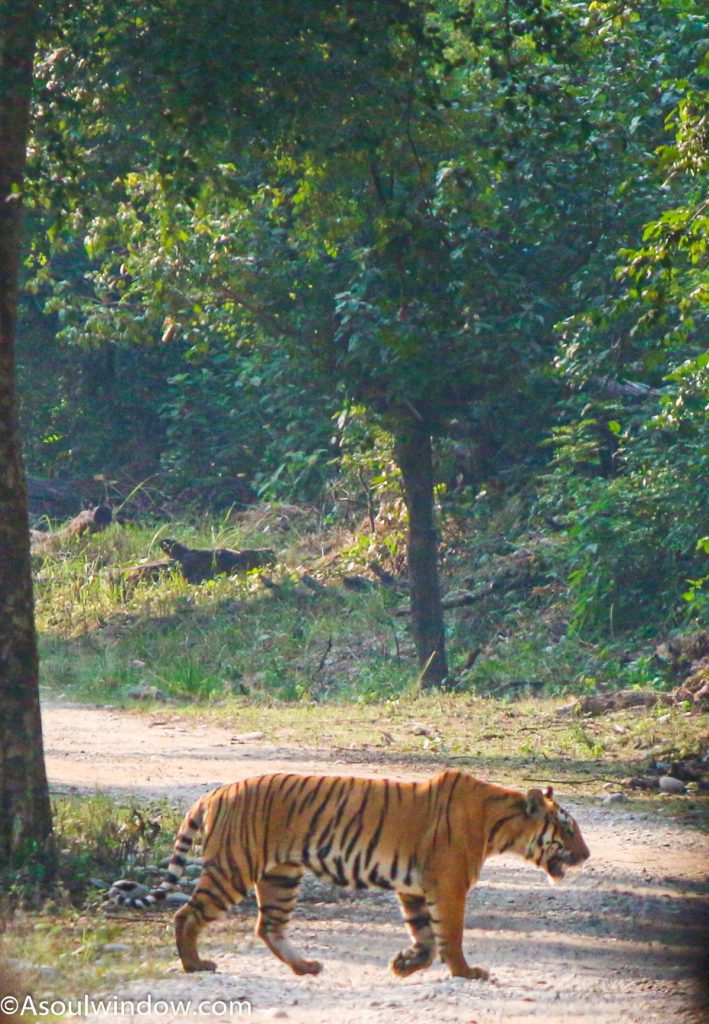
Not many know that TAL, which is also known as Terai Arc Landscape, is where the densest population of wild tigers exist! There are as many as 14 regions in TAL which have been identified as protected areas for wildlife conservation. While 5 of these protected forests are located in Nepal, 9 of these are situated in India. Nandhaur tiger reserve indeed is one of the best places for tiger conservation in India.
Wildlife Conservation efforts
The sole objective of the tiger conservation project in Nandhaur Wildlife Sanctuary is to strengthen the existing trans boundary co-operation between India and its neighboring country Nepal. I noticed several wildlife officials during my visit. Needless to say, foot patrolling in the forest areas by Front line forest staff is the most important component of wildlife protection. Monsoon patrolling by Uttarakhand Forest staff at Nandhaur Wildlife Sanctuary is also common.
Tiger Conservation in India has been one of the most successful wildlife conservation projects in the world. Uttarakhand Forest Department or UKFD in association with Wildlife Institute of India (WII) and Zoological Society of London (ZSL) has taken several initiatives over the years to strengthen tiger population in the safe haven of Nandhaur Wildlife Sanctuary and the terai region that surrounds it.
Soul Window Facts
Have you explored the terai regions of Nepal and India. Some of the tourist destinations in the Indian terai belt which I have visited are Dudhwa National Park, Katarniaghat, Kushinagar, Shravasti, Piparahwa aka Kapilvastu. In Nepal, the terai regions I have visited are Chitwan National Park and Lumbini, the birthplace of Buddha Bhagwan.
Nestled in the pristine Himalayan foothills, the weather and landscape of terai region is very unique. No one talks about this aspect of Uttar Pradesh. Similarly, I learnt about the unique bhabhar region of Himalayas when I visited Jhirna Zone of Jim Corbett National Park on the border of Uttarakhand and Uttar Pradesh.
Challenges to wildlife conservation
During my visit, I noticed that agricultural land and human settlements are situated right next to the Nandhaur Wildlife Sanctuary on its northern and southern extremities. I asked my homestay host, “Is it common to see wild animals on road?” Amused, all he said with a smile, was, “Animals know no boundaries.”
Nandhaur Forest Rest House
Deep inside the jungle, our local safari guide took us to a colonial building built by the British. It is a must-visit place. The buildings of the forest rest house here date back to the year 1876. The sprawling verandahs here are picturesque. We saw no one here when we visited. Inside the bedroom, I saw some beds, chairs with attached toilets.

The guide also took us to the forest rest house just as we entered the sanctuary premises. Walking on the lush grounds with a gravel path, I noticed a demolished wall nearby, which I was told was the work of wild elephants. Our guide offered us a cup of tea here which we politely denied because it was getting dark and cold. You can stop here at the start of the wildlife safari. Many staff members and caretakers stay here.
How to book jeep safari in Nandhaur Wildlife Sanctuary
Nandhaur Sanctuary makes for a great weekend escape from Delhi NCR. You can plan to go on an offbeat jeep safari here with your friends and family and return back to your office just in time.
Since the terrain of the Nandhaur Sanctuary is still so raw and rough and because there is a lot of off-roading here, the bumpy and rocky terrain can only be navigated via a sturdy jeep or any other SUV. You can hire vehicles from Kakrali gate in Tanakpur or Haldwani. You have to pay a small entry fee and fee for jeep.
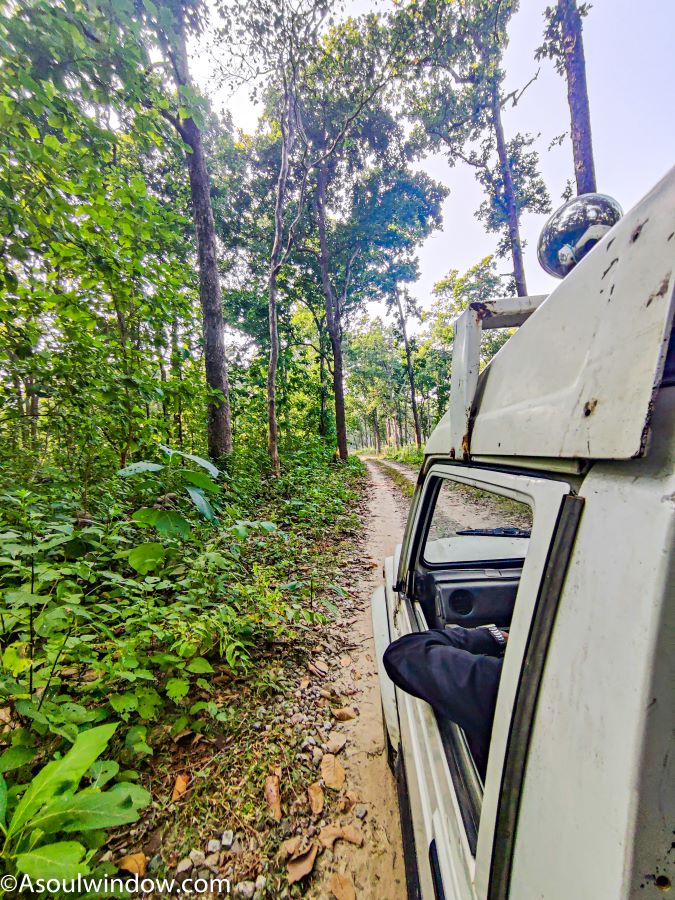
Souvenirs Shopping Guide to Nandhaur Wildlife Sanctuary
What to buy in Nandhaur Wildlife Sanctuary?
You can pick the products made by local farmers such as
- wild honey
- gahat/horse gram
- madua/finger millet
- Urad/Black gram
These are marketed through Nandhaur Nature Shop and also through online marketing platforms. This new initiative helps in improving the financial health of local communities along-with the local farmers of the Nandhaur landscape.
Where to stay in Nandhaur Wildlife Sanctuary
There are not many fancy places to stay around Nandhaur Wildlife Sanctuary. Ultra-luxury resorts and 5-star hotels are also not common here. You can still find some decent home-stays, hotels and lodges in Tanakpur as well as Haldwani. The Forest Rest Houses within the jungle is where you can spend the night in the lap of nature.
Homestay
We had stayed at a lovely homestay which fell on the same road that led to Maa Purnagiri and Boom Temple. This homestay is located very close to the Nandhaur Wildlife Sanctuary. Though it is called as Hotel Prateek’s Premises, but it is more of a home-stay, run by a local Pahari family than a clinical hotel. I enjoyed my interaction with father and mother of the home-stay owner. They even told me about some nearby places of interest such as the Indo-Nepal border.
Contact details of Hotel Prateek’s Premises, Tanakpur: 9627308758, 9761299297.
Forest Rest Houses
We also made a small stop at the one of the three Forest Rest Houses which are situated within the premises of the sanctuary. The 3 suites of Nandhaur Forest Rest House namely, Hornbill, Nandhaur and Mahaseer are available for stay. Tents can also be arranged here upon request.
There are 2 suites in Jaulasal FRH which was constructed in the year 1923. Amwlakheda FRH, which was built in the year 1887 also has 2 suites. Homely and healthy meals are available here if you inform them in advance.

Keep in mind though, that you will need permits from the SDO, Forest Division at Haldwani. You can do it yourself or your tour agent will arrange the same for you. You can also stay in Tanakpur (like I did) or in Haldwani and make a day trip to this lesser-known sanctuary.
Be warned that the facilities in Forest rest houses are few. Even electricity is also not regular here. Some places are powered only by solar panels.
Where to eat in Nandhaur Wildlife Sanctuary
Since it is located in a remote place, it is not easy to arrange food. Unlike other national parks and wildlife sanctuaries of India which I have visited, food and beverages are not easy to find in the premises of the sanctuary. If you are staying in any of the forest rest houses, do inform the kitchen staff in advance so that they can arrange for the meals.
Best time to visit Nandhaur Wildlife Sanctuary?
Nandhaur Wildlife Sanctuary open in the months of October, November, December, January, February, March, April, May and mid-June. During our visit in the winter month of November, I found the weather to be very pleasant. The sanctuary is open from 16th October to 14th June every year. Sanctuary is closed in mid-June, July, August, September and mid-October due to monsoon and breeding season of animals.
It turned out to be a nice time to visit Nandhaur Wildlife Sanctuary. The nights were also not very cold when we visited between 23-26th November. However, beware of sudden decrease in temperatures. On many days in winter, especially in the coldest months of December and January, it can get very cold in Tanakpur. Winter is still the peak season here.
Duration of Visit in Nandhaur Wildlife Sanctuary
How many days to spend in Nandhaur Wildlife Sanctuary? What can I do in 1 day in Nandhaur Wildlife Sanctuary? You can do safaris if you have only one day at hand.
What can I do in 2 days in Nandhaur Wildlife Sanctuary? Apart from the usual jeep safaris, you can also explore nearby tourist destinations.
Soul Window Travel Tips on Nandhaur Wildlife Sanctuary
You will have to stay for at least 2 nights and 1 day in Nandhaur Wildlife Sanctuary to be able to do proper jeep safari without rushing. Staying in Tanakpur for more days is also recommended as there are so many interesting things to do and places to see in this part of West Uttarakhand.
Is it safe to visit Nandhaur Wildlife Sanctuary?
Yes, it is safe to visit Nandhaur Wildlife Sanctuary? Just ensure that you go inside the jungle with a trusted service provider. Since not many tourists visit here, it is wise to go with a trusted tour guide and jeep safari driver.
What currency is used in Nandhaur Wildlife Sanctuary?
INR or Indian Rupee used in Nandhaur Wildlife Sanctuary
ATM in Nandhaur Wildlife Sanctuary
Since it is a forest area, there are no ATMs inside Nandhaur Wildlife Sanctuary. Digital payment is also not very popular here. Cards may not be accepted at many places here. This is why withdraw cash from Tanakpur or Haldwani or your origin city (Delhi etc) before you enter Nandhaur Wildlife Sanctuary.
Photography Tips for Nandhaur Wildlife Sanctuary
Carry wide angle lens for wildlife shots. If you are staying in the forest rest house, be warned that electricity supply is very irregular here. This is why ensure that your cameras and mobile phones are charged all the time. Carry extra batteries of camera if possible.
Hire local tourist guide in Nandhaur Wildlife Sanctuary
The local tourist guide who accompanied us to Nandhaur Wildlife Sanctuary was courteous and sincere. He knew the paths well and also educated us about the unknown facts about the jungle. He also showed us pathway to some shrines which were located within the sanctuary premises.

Languages spoken in Nandhaur Wildlife Sanctuary
Kumaoni is the main language spoken and understood. However, everyone also speaks good Hindi here. English is also understood and spoken by many local people and those employed in the tourism field.
Toilet facility in Nandhaur Wildlife Sanctuary
During my visit, I had used the clean toilets which were available in both the forest rest houses which I had visited.
Entry fee for Nandhaur Wildlife Sanctuary
A small entry fee is charged for jeep safari in the Nandhaur Wildlife Sanctuary.
Backpacking Budget Travel Tips for Nandhaur Wildlife Sanctuary
We stayed in a low budget homestay near Kakrali Gate of the sanctuary. Jeep safaris are expensive but you can split costs if you travel in a group of friends or family.
There is not much else here which can burn a hole in your pocket.
Solo Trip Tips for Nandhaur Wildlife Sanctuary
Nandhaur Wildlife Sanctuary is not like other national parks of India where many tourists visit and you can join a group and pay on a single person basis. It is hard to find other tourists here. Solo jeep safari, if done solo will be very expensive.
Luxury travel Tips for Nandhaur Wildlife Sanctuary
For luxury travelers, there are hardly any modern frills or amenities available inside the sanctuary. You can get better services and luxuries in Tanakpur and Haldwani but do not expect many luxury stays in these cities either. This I also feel is a blessing. It is not every day after all that we get the luxury to breathe in the lap of nature.
What to wear in Nandhaur Wildlife Sanctuary
Despite visiting Nandhaur Wildlife Sanctuary in the third week of November, I didn’t feel very cold. While days in November are bright and sunny, nights can be very cold. However, I was able to manage even in the night in a sweatshirt and jacket. That said, December and January are much colder here.
Timings of Nandhaur Wildlife Sanctuary
Nandhaur Wildlife Sanctuary is open from sunrise to sunset or from 6 a.m. to 6 p.m.
Excursions from Nandhaur Wildlife Sanctuary
There are several exciting picnic spots near Nandhaur Wildlife Sanctuary. You can visit many points of attractions by keeping Tanakpur as your base.
Some of the best places to visit near Nandhaur Wildlife Sanctuary are listed as below
- Abbott Mount Church
- Advaita Ashram, Mayawati
- Almora
- Banasur ka Qila
- Bhimtal Lake
- Bhowali
- Binsar Wildlife Sanctuary
- Chaukori
- Chauli ki Jali
- Chitai Golu Devta Temple
- Dandheshwar Temple
- Dharchula
- Dwarahat
- Ghorakal
- Golu Devta or Gwal Devta
- Gunji
- Jageshwar Dham
- Kailash Mansarovar Yatra
- Kalapani
- Kasar Devi
- Katarmal Surya Temple
- Kranteshwar Mahadev Temple
- Lakhudiyar Rock painting
- Lipulekh Pass
- Lohaghat
- Maneshwar Temple
- Munsiyari
- Nagnath Temple
- Nanak Matta
- Naukuchia Taal
- Neem Karoli Baba
- Pancheshwar Dham
- Patal Bhuvaneshwar Cave Temple
- Patal Rudreshwar
- Pitthoragarh
- Reetha Meetha Sahib
- Swami Vivekanand Ashram
- Tanakpur
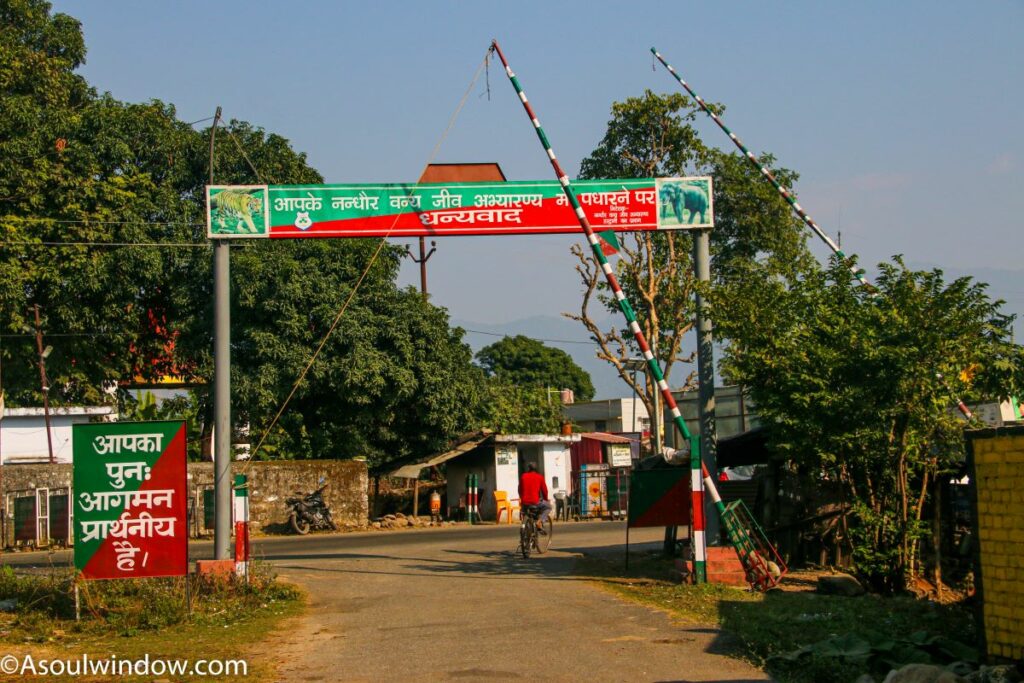
Distances from Nandhaur Wildlife Sanctuary
The below distances are from the Kakrali Gate of Nandhaur Wildlife Sanctuary. Kakrali gate in situated in the center of Tanakpur.
Distance between Khatima and Nandhaur Wildlife Sanctuary, Tanakpur is 23.4 kilometres and it takes around 30 minutes via NH9.
Distance between Nanak Matta and Nandhaur Wildlife Sanctuary, Tanakpur is 39 kilometres and it takes around 1 hour via NH9.
Distance between Champawat and Nandhaur Wildlife Sanctuary, Tanakpur is 73 kilometres and it takes around 2 hours via NH9.
Distance between Lohaghat and Nandhaur Wildlife Sanctuary, Tanakpur is 87 kilometres and it takes around 2 hours and 30 minutes via NH9.
Distance between Rudrapur and Nandhaur Wildlife Sanctuary, Tanakpur is 92.5 kilometres and it takes around 2 hours via NH9.
Distance between Pantnagar and Nandhaur Wildlife Sanctuary, Tanakpur is 95 kilometres and it takes around 2 hours via NH9.
Distance between Haldwani and Nandhaur Wildlife Sanctuary, Tanakpur is 99 kilometres and it takes around 2 hours and 30 minutes via NH9 and SH41.
Distance between Kathgodam and Nandhaur Wildlife Sanctuary, Tanakpur is 101 kilometres and it takes around 2 hours and 20 minutes via NH9 and SH41.
Distance between Nainital and Nandhaur Wildlife Sanctuary, Tanakpur is 137 kilometres and it takes around 3 hours and 40 minutes via NH9 and SH41.
Distance between Pithoragarh and Nandhaur Wildlife Sanctuary, Tanakpur is 147 kilometres and it takes around 4 hours via NH9.
Distance between Almora and Nandhaur Wildlife Sanctuary, Tanakpur is 183 kilometres and it takes around 5 hours via NH109 and SH41.
Distance between Kasar Devi and Nandhaur Wildlife Sanctuary, Tanakpur is 190 kilometres and it takes around 5 hours and 25 minutes via NH109 and SH41.
Distance between Dharchula and Nandhaur Wildlife Sanctuary, Tanakpur is 238 kilometres and it takes around 7 hours via NH9.
Distance between Munsiyari and Nandhaur Wildlife Sanctuary, Tanakpur is 274 kilometres and it takes around 8 hours and 10 minutes via NH9.
Distance between Gunji and Nandhaur Wildlife Sanctuary, Tanakpur is 306 kilometres and it takes around 9 hours and 45 minutes via NH9 and Kailash Mansarovar Road.
Contact Details of Nandhaur Wildlife Sanctuary
Below are the Contact Details of Nandhaur Wildlife Sanctuary. Apply STD Code of 05946 before the number.
Tourist/ Wildlife offices
Divisonal Forest Office
Haldwani Forest Division
Address: Tikonia Campus, Haldwani
Phone number: 05946-220002
Nandhaur WLS SDO
Phone number: 09411076337
Range Officer
Phone number: 9458128392, 9412130041
Address: 103, Indraprakash Building, 21, Barakhamba Road, New Delhi
Phone number: 011-23712246, 41519366
How to reach Nandhaur Wildlife Sanctuary?
We visited Nandhaur Wildlife Sanctuary as a weekend getaway from places in Delhi NCR such as Ghaziabad, Noida, New Delhi and Gurugram. Being so close to Delhi, areas around the Nandhaur Sanctuary makes for a great weekend break.
By air
The closest airport from Nandhaur Wildlife Sanctuary is located in Pantnagar. Many domestic flights are available between Pantnagar and international airport of New Delhi, the capital of India. Direct cab services from Pantnagar to the sanctuary are available.
By Indian Railway
Tanakpur Railway Station (Station Code: TPU) is the closest railway junction from Nandhaur Wildlife Sanctuary. Haldwani is another major railway station near the sanctuary.
By Cab
Via places like Hapur, Rudrapur and Khatima, Tanakpur is well connected by smooth motorable roads from New Delhi, Ghaziabad, Gurugram and Noida etc. Cabs to Tanakpur from other nearby tourist destinations in Uttarakhand such as Champawat, Lohaghat, Munsiyari and Pithoragarh are also available.
By Bus
ISBT Anand Vihar to Haldwani route is a busy one. You can find several direct buses to Haldwani from the Delhi ISBT Anand Vihar bus stand. You can find many Uttarakhand Roadways buses fom here which operate from 6:00 a.m. to as late as midnight. With a bus leaving after every 30 minutes, the frequency here is excellent.
Routes from New Delhi NCR
- You can take NH24 to Rampur via the Hapur bypass
- Head to Rampur via Gajraula
- Joya and Moradabad bypass fall next.
- From Rampur railway station, take a left turn onto NH87 to Haldwani via Rudrapur and Tanda.

Conclusion: Why visit Nandhaur Wildlife Sanctuary?
Is Nandhaur Wildlife Sanctuary worth a visit? The youngest wildlife sanctuary of India is indeed a true naturalist’s paradise. The discerning traveler prefers such places over touristy wildlife destinations such as Ranthambore and Bandhavgarh etc.
The abundant variety of avifauna and wildlife are reasons enough to visit Nandhaur Wildlife Sanctuary. Nandhaur Wildlife Sanctuary is a perfect wildlife destination for those who enjoy quietude and raw nature.
Falling between Champavat and Haldwani forest divisions, there are also many tourist attractions nearby. This lesser-known place deserves more love that it gets. Do share this detailed travel guide with your friends and family so that more people are made aware about such hidden gems of Uttarakhand.
Top Travel Blogger from India
